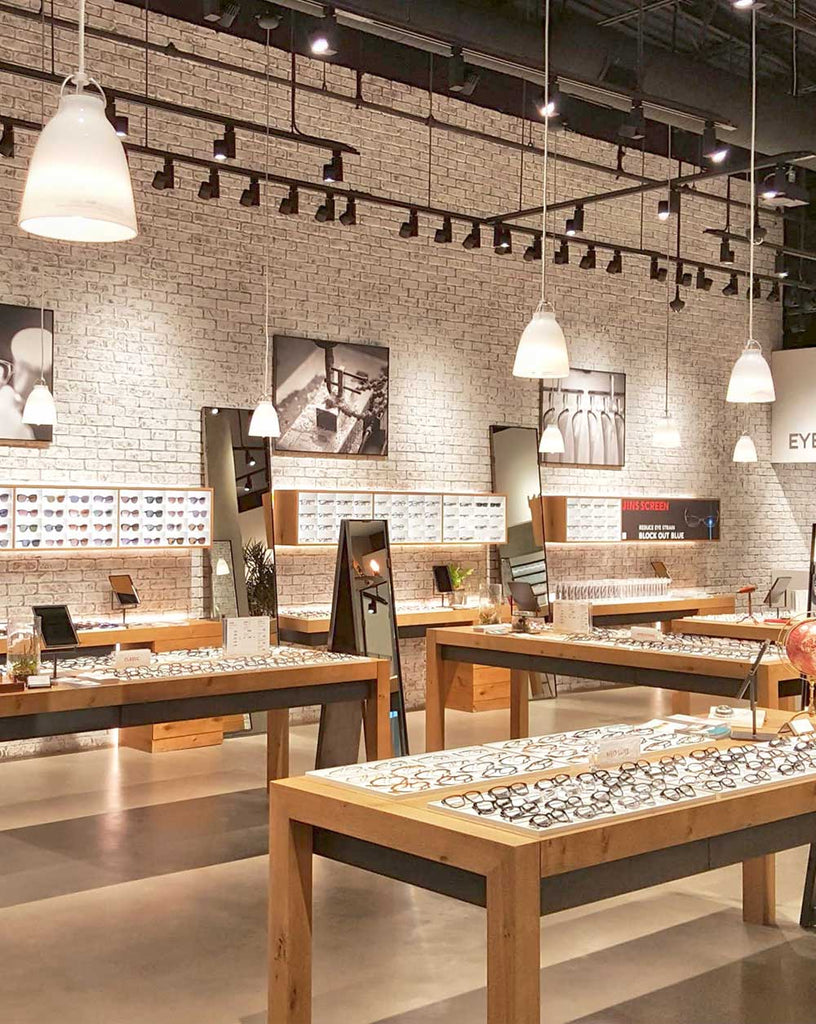Why are glasses so expensive? This question crosses many people's minds as they get prescriptions filled at brick-and-mortar vision centers. That's why direct-to-consumer (DTC) retailers have become a welcome alternative in the eyewear industry. Using this model, JINS Eyewear is able to offer cost savings to customers. How does this work? First, it's important to understand why glasses are priced the way they are and how the market has shifted.
How the Traditional Retail Model Works
Eyewear customers know the type of lenses, special coatings, and brand and style of frames influence the cost of prescription glasses. However, it might come as a surprise that product manufacturing, warehousing, and distribution are costs that also affect prescription eyeglass pricing.
Consumers' wallets are impacted most by hidden costs associated with the traditional retail model because there are numerous parties involved in the process. Designers and other frame brands charge licensing fees to wholesalers and retailers. Licensing agreements help cover the cost of manufacturing and additional expenses—and create a perceived value for a designer product.
Frame wholesalers pay storage and distribution costs, which influences how much they charge retailers for products. Third-party manufacturing and shipping fees affect the price of lenses, too.
To cover the expenses of working with third-party vendors, storefront rentals, employee salaries, utilities, and other overhead fees, traditional retailers often sell prescription eyewear at higher prices when compared to direct-to-consumer counterparts.
Why the Direct-to-Consumer Model Is Different
How much do prescription glasses cost at DTC retailers? Typically, a lot less than what you'd pay at traditional vision centers. That's because DTC retailers have fewer intermediaries involved in the process.
These retailers employ trained professionals to design and manufacture frames and create lenses in the company's own production facilities and labs. There's no need to outsource manufacturing, which means DTC retailers have control over material and production costs.
Direct-to-consumer retailers sell products directly to end customers, which cuts out the need for third-party retailers. Internet traffic is the main driver of sales, which helps eliminate the fees associated with operating brick-and-mortar locations.
Since the DTC model cuts middlemen out of the supply and distribution chain and reduces operating costs, retailers are able to pass the savings along to customers. Even if these brands start opening stores, they can do it with the knowledge that their manufacturing and distribution costs are under control.
Startup vs. Economy of Scale
Since our first store opened in 2001, JINS has expanded to include over 650 locations in Japan, China, Taiwan, the Philippines, and the U.S.
Since we emerged in the U.S. market in 2015, we've used our history of success to provide a seamless shopping experience online and in JINS stores. Our vendor relationships and reputation for using high-quality products have helped us achieve economy of scale, or the ability to increase production at lower operating costs. With a large volume readily available and technology that allows a 30-minute, start-to-finish in-store experience, JINS has low overhead fees—and this translates to affordable pricing.
Startups, by comparison, often have steep upfront costs and lack the established vendor relationships and necessary funds to source quality materials. They also have to get creative when it comes to pricing structure to avoid losses during the company's infancy or rely on venture backing to stay afloat until they start experiencing sustainable growth.
What does this all mean for you? A wide selection of men's, women's, and unisex eyeglasses and sunglasses that walk the line between classic and fashion-forward styles. Plus, we offer transparent pricing and high-quality lens upgrades. Our glasses are designed in Tokyo with style and quality that are now recognized around the world.


















